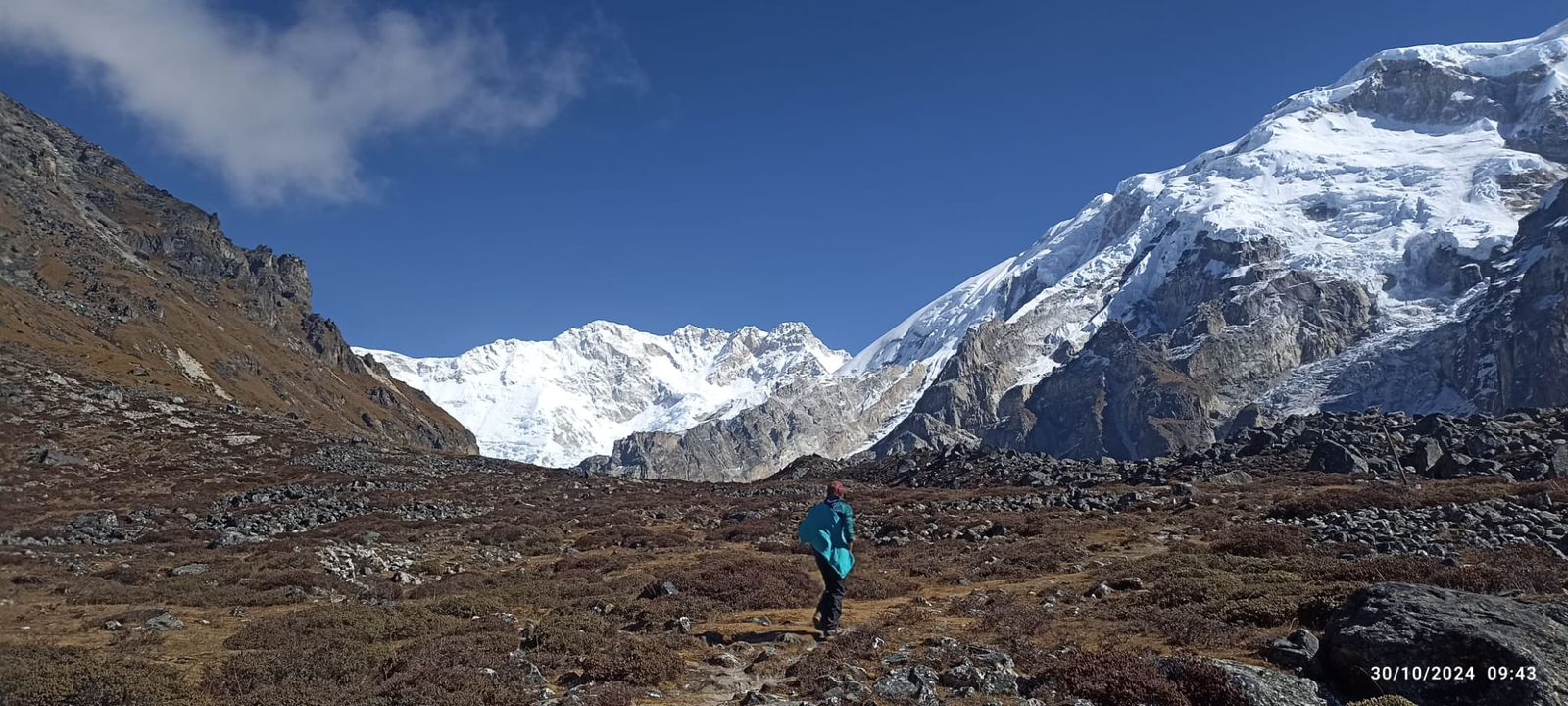

Kanchenjunga Circuit Trek
A challenging Journey to Kanchenjunga Base Camps - World’s Third-Highest Peak
-
 21 Days
21 Days
-
Trekking
-
Tough
Kanchenjunga Circuit Trek – A remote Himalayan Journey
The Kanchenjunga Circuit Trek is one of Nepal’s most remote and rewarding adventures, leading to both the North and South Base Camps of Mount Kanchenjunga—the world’s third-highest peak at 8,586 meters. This off-the-beaten-path journey offers striking landscapes, rich cultural experiences, and awe-inspiring views of some of the planet’s highest mountains.
Once closed to visitors, the region opened in the mid-1980s and is now protected as the Kanchenjunga Conservation Area. The trail winds through untouched alpine forests, high pastures, glacial valleys, and traditional villages, with highlights like the ancient Ramtang and Oktang monasteries, cascading waterfalls, and glaciers such as Yalung and Kanchenjunga.
This Kanchenjunga Circuit trek offers true solitude and raw Himalayan beauty. The region is home to over twenty peaks above 7,000 meters, including Yalung Kang (8,505m), Kambachen (7,903m), Janu (7,710m), Jongsong (7,483m), and Kabru (7,353m), framed by vast glaciers and deep river valleys feeding the Tamor River.
Still well off the tourist radar compared to Everest or Annapurna, the Kanchenjunga Circuit is gradually opening up with the growth of Nepal’s Great Himalayan Trail. Basic teahouses and homestays now support trekkers along the route, encouraging sustainable tourism—yet the area retains its remote, untamed charm, ideal for fit and experienced adventurers.
Kanchenjunga Circuit Trek Highlights
- Explore both North and South Base Camps of Mount Kanchenjunga
- Spectacular views of majestic peaks, including Yalung Kang, Janu, and Kambachen
- Hike through the Kanchenjunga Conservation Area, rich in biodiversity and natural beauty
- Visit remote Buddhist monasteries such as Ramtang and Oktang
- Experience authentic Himalayan culture and life in traditional Rai, Limbu, and Sherpa villages
- Walk beside glaciers, waterfalls, and through ancient rhododendron and pine forests
- Participate in a less-commercialized trek that supports local communities
- Follow sections of the Great Himalayan Trail, Nepal’s new trekking frontier
Why do the Kanchenjunga Circuit Trek?
If you’re seeking a remote, raw, and rewarding trekking experience far from the crowds, the Kanchenjunga Circuit Trek offers all in one. This trek isn’t just about majestic peaks; it’s about exploring untouched Himalayan wilderness, immersing yourself in centuries-old cultures, and experiencing the journey as much as the destination.
Unlike the more trodden routes in Nepal, Kanchenjunga remains a hidden gem, still largely untouched by mass tourism, which means a more intimate connection with nature, greater chances of spotting rare wildlife like the red panda or snow leopard, and a sense of true adventure in one of the most spectacular high-altitude regions in the world.
As teahouses and infrastructure along the trail gradually improve, now is the perfect time to trek Kanchenjunga—before it becomes overrun with larger crowds. The route still retains its wild, untouched charm, offering an authentic Himalayan experience that’s increasingly rare. Join Wind Horse Tours on a true wilderness journey to one of Nepal’s last hidden gems.
Kanchenjunga Circuit Trek Itinerary
Day 1: Arrival in Kathmandu
Day 2: In Kathmandu- Sightseeing & Trek preparation
Day 3: Fly from Kathmandu to Bhadrapur- Drive to Phungling
Day 4: Drive from Phungling to Sekathum
Day 5: Trek from Sekathum to Amjilosa
Day 6: Trek from Amjilosa to Gyabla
Day 7: Trek from Gyabla to Ghunsa
Day 8: Acclimatization Day in Ghunsa
Day 9: Trek from Ghunsa to Khambachen
Day 10: Trek from Khambachen to Lhonak
Day 11: Day Trip to Pang Pema (North Base Camp)
Day 12: Trek from Lhonak to Ghunsa
Day 13: Trek from Ghunsa to Sele Le pass
Day 14: Trek from Sele Le to Tseram via Mirgin La Pass
Day 15: Trek from Tseram to Ramche – Excursion to Oktang (South Base Camp)
Day 16: Trek from Ramche to Torongten
Day 17: Trek from Torongten to Yamphudin
Day 18: Trek from Yamphuding to Khebang
Day 19: Drive to Bhadrapur
Day 20: Fly to Kathmandu
Day 21: Departure
Cost Information
Cost varies on group size. Please contact us for detailed information and an estimated quote.
Included
- All transfers by private vehicle.
- 3 nights accommodation in 3-4* category hotels in Kathmandu.
- Accommodation in basic tea house during the trek .
- Only breakfast during the stay in Kathmandu.
- Three standard meals (breakfast/lunch/dinner) and some hot drinks (tea/coffee) during the trek.
- One welcome/farewell dinner with a cultural performance in Kathmandu.
- 1 full day guided city tour in Kathmandu.
- Domestic flight cost Kathmandu-Bhadrapur-Kathmandu.
- English-speaking licensed trekking guide along with a porter (1 porter for every two trekkers).
- First aid kit with basic medication.
- Trekking staff accommodation, wages, meals, trekking gears, and insurance.
- All necessary paperwork and permits for the trek (RAP/KCAP).
- All government tax and service charges.
Not included
- Nepal Visa.
- International airfare.
- Meals other than listed (lunch and dinner in Kathmandu).
- Personal expenses (laundry, telephone, bar, beverages).
- Bottled/boiled water, battery recharge, Wi-Fi and hot showers during the trek.
- Tips and gratuities to Guide, Porter and driver.
- Travel medical insurance covering rescue and emergency evacuation.
- Personal trekking gears and equipment’s.
- Trip cancellation cost due to your health, weather condition, political situation, and any other unforeseen events.
- Any other expenses other than the listed above.
Detailed Itinerary
Expand AllArrival in Kathmandu
Kathmandu sightseeing & trek preparation
Fly to Bhadrapur-Drive to Phungling
Drive from Phungling to Sekathum
Trek from Suketham to Amjilosa
Trek from Amjilosa to Gyabla
Trek from Gyabla to Ghunsa
Acclimatization Day in Ghunsa
Trek from Ghunsa to Khambachen
Trek from Khambachen to Lhonak
Day hike to Pangpema (North Base Camp) – Return to Lhonak
Trek from Lhonak to Ghunsa
Trek from Ghunsa to Sele Le
Trek from Sele Le to Tseram (3,870m) via Mirgin La Pass (4,663m)
Trek from Cheram to Ramche – Explore Yalung Glacier
Trek from Ramche to Torongten
Trek from Torongten to Yamphudin
Trek from Yamphudin to Khebang
Drive from Khebang to Bhadrapur
Fly from Bhadrapur to Kathmandu
Departure
Trip Photos
FAQs
- Can I trek solo in Kanchenjunga?
No—solo trekking isn’t permitted in the Kanchenjunga region. Trekkers must travel with a licensed guide and be part of a group of at least two to obtain the required permits.
- Where does the Kanchenjunga Circuit Trek take place?
The trek is in eastern Nepal, along the border with India and Tibet. It winds through the protected Kanchenjunga Conservation Area, known for its rich wildlife and diverse landscapes.
- How long does the Circuit Trek take?
Typically it takes around 20–26 days, depending on your chosen itinerary. The route encompasses both the North and South Base Camps, completing a full circuit around Kanchenjunga.
- How difficult is the trek?
This is a strenuous, high-altitude trek featured by long days, steep ascents, glacier crossings, and rugged terrain. Strong physical fitness, trekking experience, and good acclimatization are essential.
- What permits are required?
Trekkers need to obtain:
- A Restricted Area Permit (RAP), issued by Nepal Immigration.
- A Kanchenjunga Conservation Area Permit (KCAP).
You must be in a guided group (minimum of two people) for both.
- What's the highest altitude on the trek?
The trek reaches approximately 5,143 m (16,873 ft) at North Base Camp (Pangpema). Other high points include Lapsang La (approx. 5,160 m) and Sele La (4,290 m).
- Is altitude sickness a concern?
Absolutely. Proper acclimatization—gradual ascent, rest days—is vital to prevent Acute Mountain Sickness (AMS).
- What accommodation is available along the route?
You’ll stay mainly in basic teahouses offering twin-share rooms, simple bedding, shared (often squat) toilets, and communal dining areas with Bukhari stoves. Bring a warm sleeping bag, as rooms are generally unheated.
- What meals can I expect?
Teahouses serve Nepali staples and simple Western fare, including:
- Breakfast: Porridge, eggs, Tibetan breads, chapati, etc.
- Lunch & Dinner: Dal bhat, vegetable curries, soups, noodles, momos, fried rice, pasta.
- Hot beverages and snacks are available throughout the trek.
- How do I reach the trek's starting point?
From Kathmandu, fly to Bhadrapur or Biratnagar, then enjoy:
- A 7–9 hour drive (~240 km) to Taplejung.
- The following morning, a jeep or drive (~5–6 hours, 40 km) brings you to Sekathum (1,650 m), the official trekking trailhead.
- How should I train and prepare physically?
- Start 2–3 months early with cardio, strength training, and long hikes carrying a loaded backpack.
- Include practice hikes at altitude if possible.
- Emphasize mental readiness for remote, multi-week trekking with basic facilities.
- What sleeping gear do I need?
Pack a durable sleeping bag rated for -10°C to -20°C, and consider a liner for added warmth and hygiene.
- How is waste managed on the trek?
Follow Leave No Trace principles: carry out all non-biodegradable waste, and use toilets provided at teahouses.
- What about connectivity and power?
Expect solar-powered charging (for a small fee), intermittent mobile coverage (mostly NTC), and occasional satellite access. Bring power banks and universal adapters.


 Overview
Overview Costs
Costs Included
Included Itinerary
Itinerary Trip Photos
Trip Photos Activities Included
Activities Included
 Accommodation
3-4* hotels in Kathmandu, basic village lodges during the trek
Accommodation
3-4* hotels in Kathmandu, basic village lodges during the trek
 Meal
All meals with some tea/coffee during the trek, only breakfast while in Kathmandu
Meal
All meals with some tea/coffee during the trek, only breakfast while in Kathmandu
 Best Seasons
Best during Spring (March-May), & Autumn (mid September to November)
Best Seasons
Best during Spring (March-May), & Autumn (mid September to November)
 Route
Kathmandu-Bhadrapur-Phungling-Sekathum-Amjilosa-Gyabla-Ghunsa-Khambachen-Lhonak-Ghunsa-Sele La-Tseram-Ramche-Torongten-Yamphudin-Khebang-Bharapur-Kathmandu
Route
Kathmandu-Bhadrapur-Phungling-Sekathum-Amjilosa-Gyabla-Ghunsa-Khambachen-Lhonak-Ghunsa-Sele La-Tseram-Ramche-Torongten-Yamphudin-Khebang-Bharapur-Kathmandu
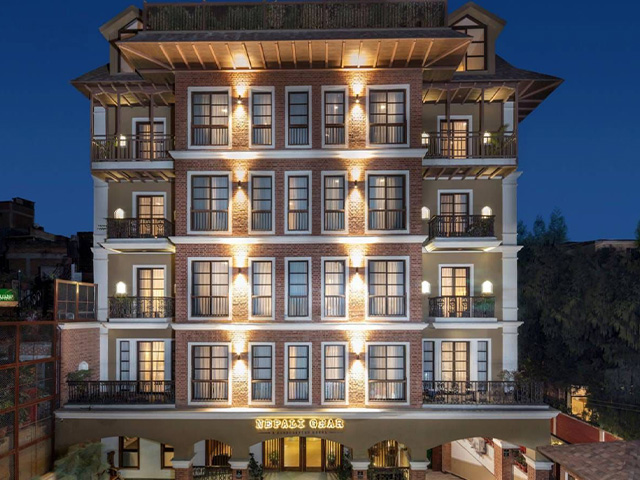

 Altitude:
Altitude:

 Duration:
Duration:


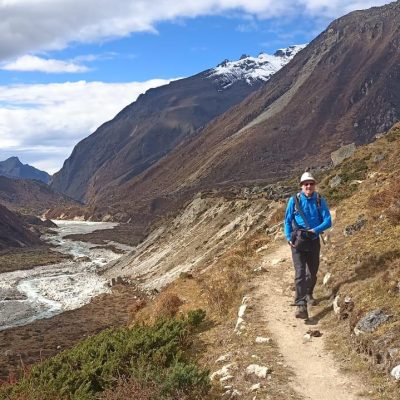
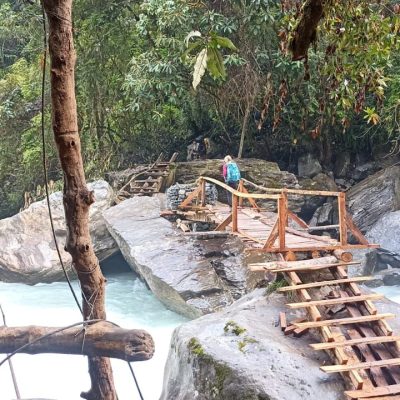
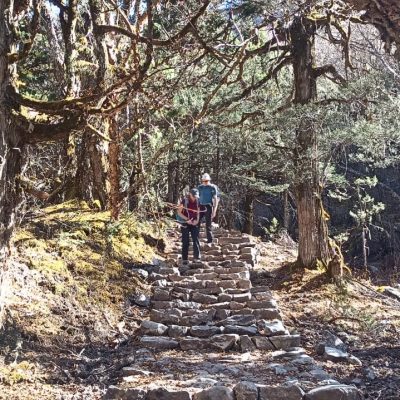
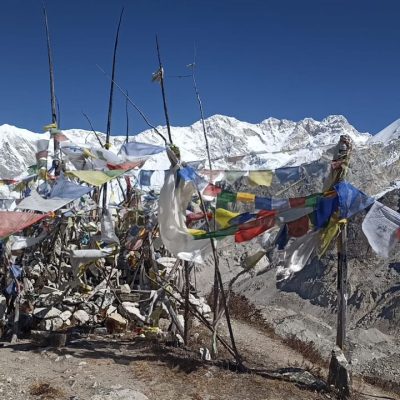
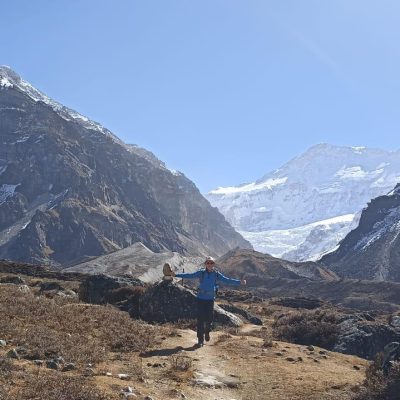


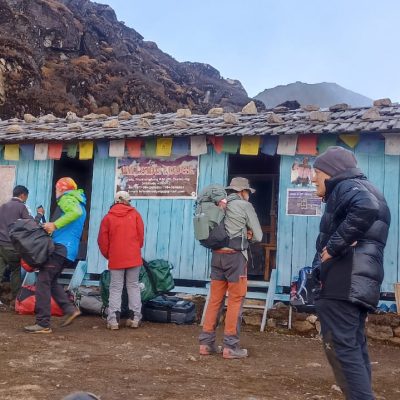
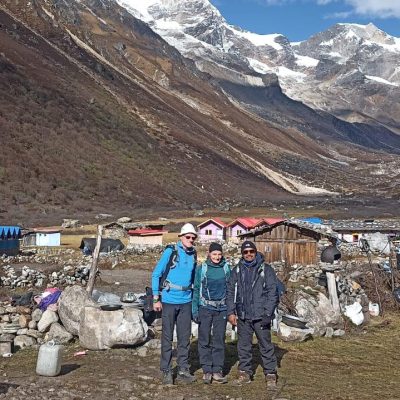
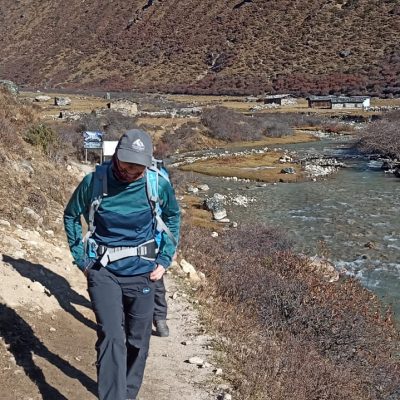
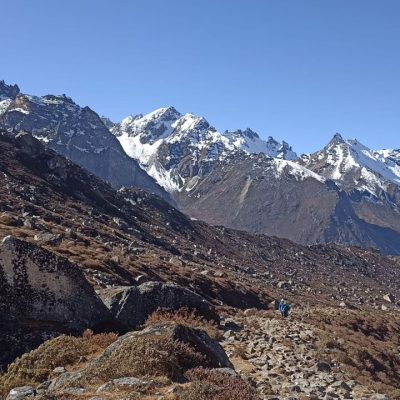
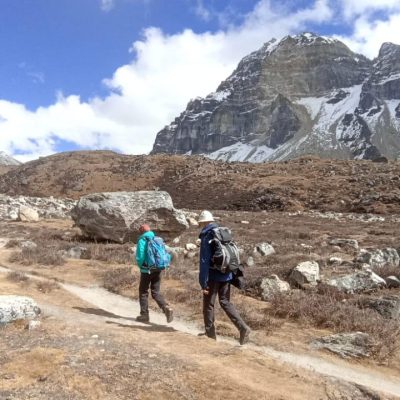
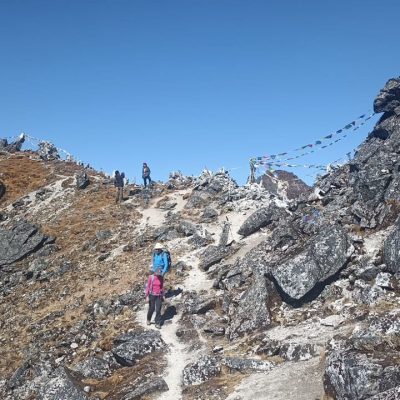
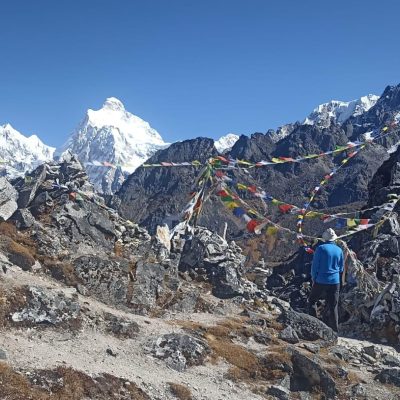
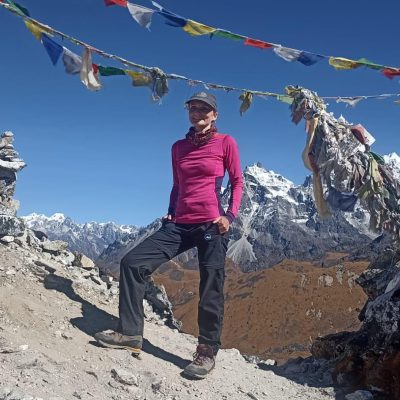
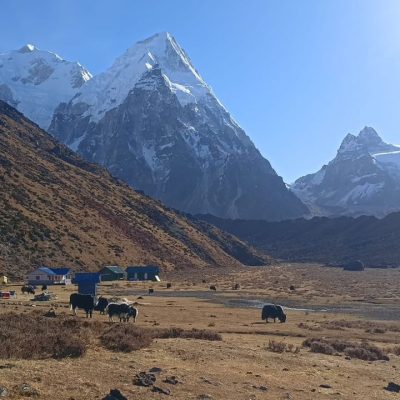
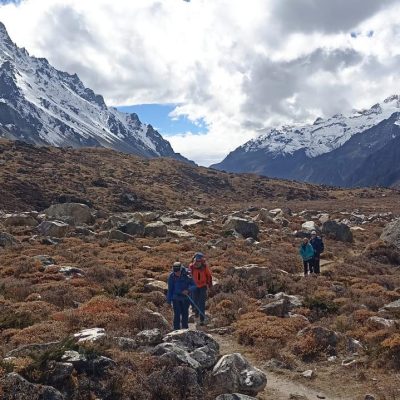
 Max Group Size
2-8
Max Group Size
2-8